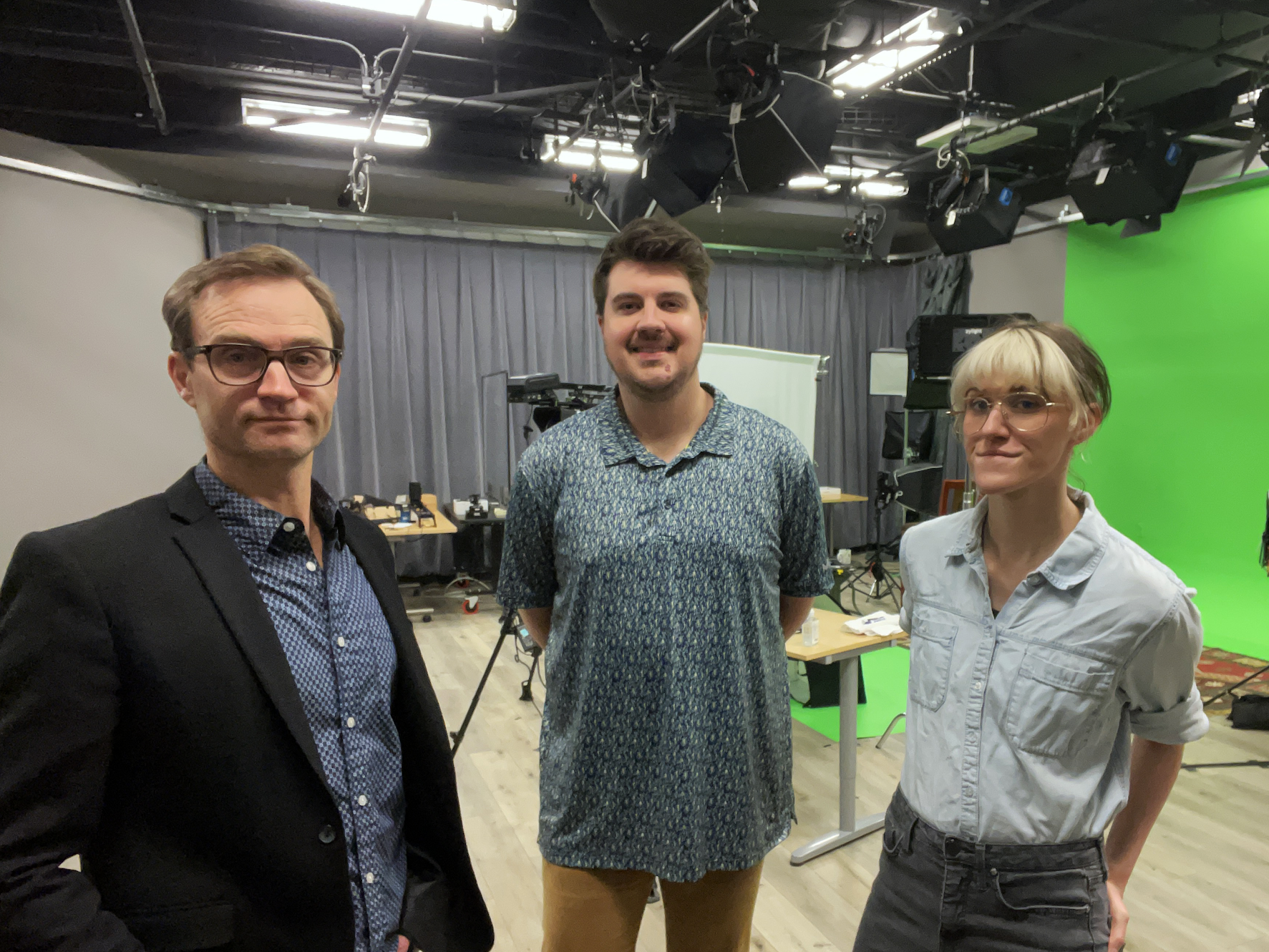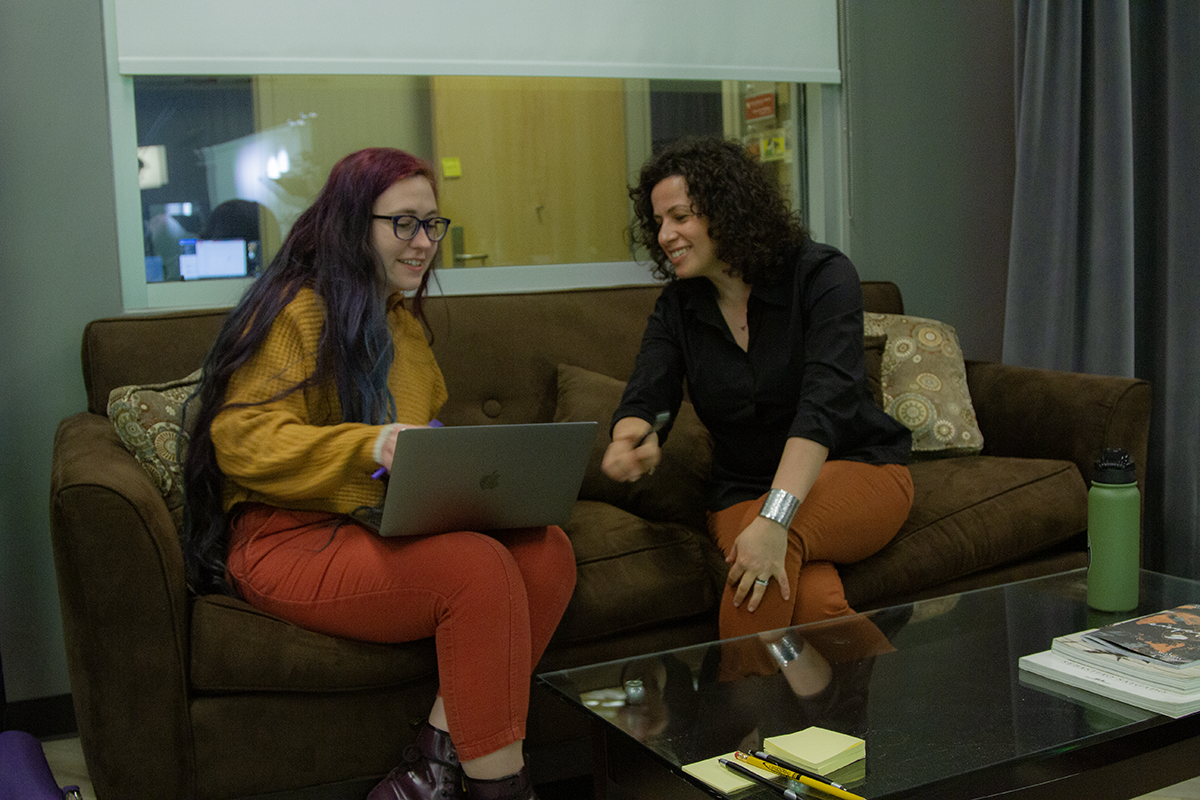The Office of Digital Learning, at the University of Oklahoma has a unique role in the education and support of their 30,000 students and 3,000 faculty. While other video production teams at universities may work on external promotion and internal communications, like a creative jack-of-all-trades for everything video production, Biff Farrell and The Office of Digital Learning’s media team specialise almost entirely in online teaching and learning. These aren’t your standard ‘record and upload a lecture’ videos either - they work alongside instructional designers and faculty to produce entire online, graduate degree programs.
“We’re a public research university,” Biff explains, “So we must apply theory and pedagogical implementation as we design curriculum, courses and media content. We work with instructional designers, course developers, and faculty to design and build courses, ramp up engagement with online learners, and use media solutions to help retention, teaching and learning.”

Working with teaching faculty to organize course content can be a challenge, and the stakes are high - students expect high-quality, engaging video content to help them earn their Master’s degree. Producing video content for online learning requires a fine balance of content, format and engagement, all wrapped up in a robust, repeatable production workflow.
When describing their workflow, Biff describes a three-step framework. “We typically produce content within three areas of focus: first program overview content that introduces the entire degree; second- a course overview that introduces the specific course; and finally, all the actual course videos that students will use for learning.”
Biff continues, “Initially, the media team requests a course media plan from faculty which includes a range of content formats. The media plan starts a conversation, targeting how many videos they need, what type of videos they are, will they need a playlist, or are they just stand alone videos. We also work out whether they will come to the studio for a talking head “History Channel-type” direct address, or if they’ll narrate a PowerPoint slide deck, or a combination of these two. Will they use our light board solution, or will they use animation? Do they want a virtual field trip to an art museum or an oil rig?”
“Once we have the full scope of video content planned out, we start the script review process. One of our course developers will storyboard the script, create accessible graphics and find visual assets to be included in the videos. Once that’s ready, we’ll shoot in the studio, or sometimes on location. Then we edit using our Editshare post production server and the Adobe Creative Suite, with Premiere Pro as our main editor. After the reviews are complete, we upload all video content to our Kaltura cloud, which we have rebranded as mymedia.ou.edu. Throughout the process we conduct quality control, making sure the course functions technically, pedagogically with universal design attributes.”
The media team has a unique feedback challenge - their internal faculty stakeholders need to collaborate at each step in the process, and the nature of educational content requires robust review and clear approvals before moving to the next stage of development.

“Teaching and learning can be complicated,” Biff shares. “Content is often dense and thorough reviews by faculty and learning designers are critical. We could have five or more internal reviews, prior to shipping the content out to a faculty member to review and provide their feedback.”
So, what’s the secret to their review and approval success? It’s Wipster of course!
“Video content for student learning needs a streamlined, elegant approach and implementation, and Wipster has absolutely helped us achieve this,” Biff says. “Before Wipster, reviewing and approving video content used to be a string of horrible email correspondence. So many time codes that didn’t match and hard to follow feedback instructions. Not to mention tons of back and forth and wasted time.”
“Wipster is a true gem – not only does it save time, but it increases professionalism. The platform itself is elegant and our clients/stakeholders appreciate the ease of use and take the review process more seriously.”
Biff found Wipster while networking with partners in the academic industry and has no intention of going back to the ‘old days’ of review and approval workflow. And thanks to the rising power of video content, he thinks it’s the perfect solution for other academic media teams to ramp up their video production.
“No matter how big or small the institution, Wipster should be the first choice for ramping up production in teaching and learning,” Biff says. “Your faculty clients will love this professional review platform, and it will help retain your production staff too.”
It's a win/win review and approval scenario for the media team and faculty at University of Oklahoma. If your educational institute is looking to ramp up video production, Wipster could be a winner for you too. Get started on a free trial of Wipster today and contact our team to see if you qualify for our discounted educational pricing.




